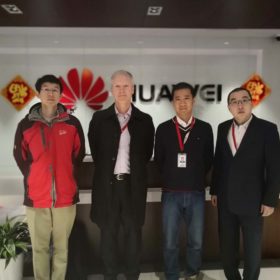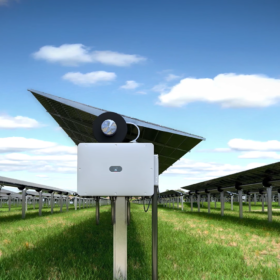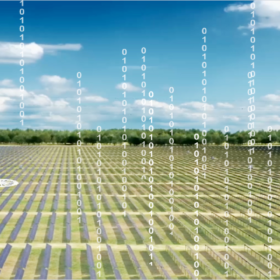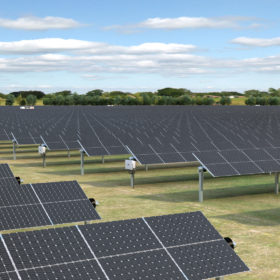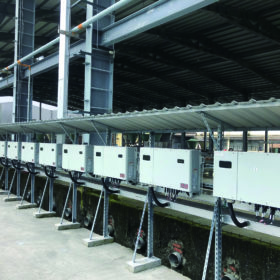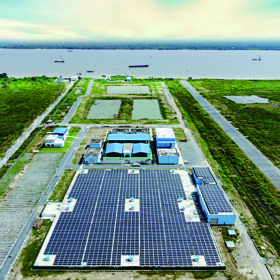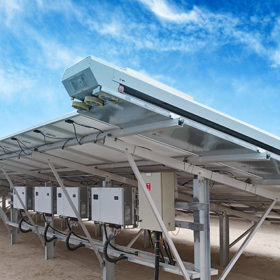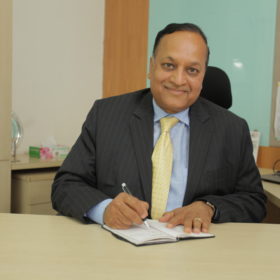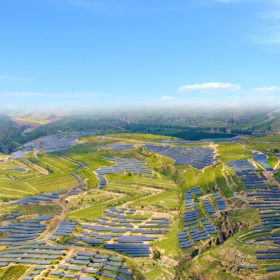The Force of Digitalization
At pv magazine, we are proud to work with Huawei for a third consecutive year to produce this special edition. When we started this cooperation in 2017, Huawei was already in its third year as global shipment leader among inverter manufacturers. It will come as no surprise that Huawei retained its leadership in this category in 2018.
The evolution of solar intelligence
Artificial intelligence (AI) is already transforming a range of industries, from the automation of trading decisions in the financial sector to the deployment of smart robots in factories. In one 2017 study, PwC estimated that AI could contribute up to $15.7 trillion to the global economy by 2030. Solar has jumped on the AI bandwagon.
Grid parity’s hackathon
In October 2018, Huawei released its AI strategy and a full-stack, all-scenario AI portfolio solution. The company’s full-stack capabilities are based on a cloud-pipe-device strategy which connects enterprise intelligence, equipment, and intelligent terminals integrated with AI. Huawei has not only incorporated AI into its internal production, logistics, and processes, but has also joined with partners to promote the development of intelligent solutions across industries.
Next generation inverters optimize bifacial boost
Inverter makers are under pressure to upgrade performance to accurately measure and manage the boost from bifacial solar panels. Inverter improvements including greater granularity of maximum power point tracking (MPPT), the marriage of artificial intelligence with more capable algorithms, and string overload safety are ushering in the next generation of inverters redesigned for bifacial systems, according to the development team at Huawei Technologies’ Smart PV Business.
Connecting intelligent power
Information and communications technology giant Huawei is on a mission to build a fully connected world. Operating in more than 170 countries and regions to serve more than three billion people globally, the company is well on its way. In this exclusive interview, pv magazine meets with Tony Xu, President of the Smart PV Business unit at Huawei, to discuss the technological breakthroughs, trends, and policies that have the company driving solar PV into the era of digitalization.
Taiwan’s rapidly developing PV market
Taiwan became a gigawatt solar market last year and capacity is expected to grow even further in 2019.
Has Vietnam’s moment in the sun finally arrived?
New solar PV installations soared for Vietnam in 2018 — at least in relative terms, they did. The nation’s cumulative installed PV capacity stood at just 106 MW by the end of 2018, according to statistics from the International Renewable Energy Agency (IRENA). That number looks paltry when stacked against regional rivals such as Thailand and the Philippines, but represents a huge jump from just 8 MW a year earlier — the approximate level at which the country’s total PV installations had languished for much of the past decade.
A tale of dust and heat
Keeping it cool even in the toughest conditions is a point of concern for many plant owners and EPCs. The trick is striking a balance between ensuring safe and efficient plant operations while keeping the associated costs to a minimum. Reducing the number of moving parts is one way to keep the O&M bill low.
Gaining the most with multi-MPPT inverters
The role of smart technologies in improving solar project costs and yields in India. Sunil Jain is the CEO and Executive Director of Hero Future Energies (HFE), an independent power producer that has an installed capacity of 1.2 GW and is striving to cross 3.5 GW by 2022.
Six trends of inverters accelerating PV grid parity
The United States, Europe, India, Latin America, the Middle East, and other regions of the world are rapidly ushering in a new era of PV grid parity. China is expected to gradually embrace grid parity in 2020. As the ‘brain’ of a PV plant, inverters play a key role. Six trends of inverters will arguably speed up the progress of grid parity.
